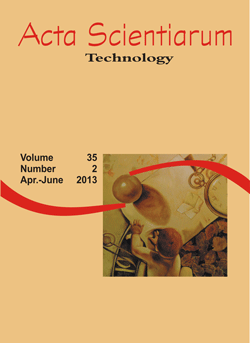<b>BPNN based MECG elimination from the abdominal signal to extract fetal signal for continuous fetal monitoring</b> - doi: 10.4025/actascitechnol.v35i2.15361
DOI:
https://doi.org/10.4025/actascitechnol.v35i2.15361Keywords:
fetal electrocardiogram, QRS complex, neural network, artificial intelligence, fetal heart rateAbstract
Fetal monitoring may help with possible recognition of problems in the fetus. This research work focuses on the design of the Back-propagation Neural Network (BPNN) and Adaptive Linear Neural Network (ADALINE) to extract the Fetal Electrocardiogram (FECG) from the Abdominal ECG (AECG). FECG is extracted to assess the fetus well-being during the pregnancy period of a mother to overcome some existing difficulties regarding the fetal heart rate (FHR) monitoring system. Different sets of ECG signal has been tested to validate the algorithm performance. The accuracy of the QRS detection using the designed algorithm is 99%. This research work further made a comparison study between various methods' performance and accuracy and found that the developed algorithm gives the highest accuracy. This paper opens up a passage to biomedical scientists, researchers, and end users to advocate to extract the FECG signal from the AECG signal for FHR monitoring system by providing valuable information to help them for developing more dominant, flexible and resourceful applications.
Â
Downloads
Downloads
Published
How to Cite
Issue
Section
License
DECLARATION OF ORIGINALITY AND COPYRIGHTS
I Declare that current article is original and has not been submitted for publication, in part or in whole, to any other national or international journal.
The copyrights belong exclusively to the authors. Published content is licensed under Creative Commons Attribution 4.0 (CC BY 4.0) guidelines, which allows sharing (copy and distribution of the material in any medium or format) and adaptation (remix, transform, and build upon the material) for any purpose, even commercially, under the terms of attribution.
Read this link for further information on how to use CC BY 4.0 properly.











8.png)




